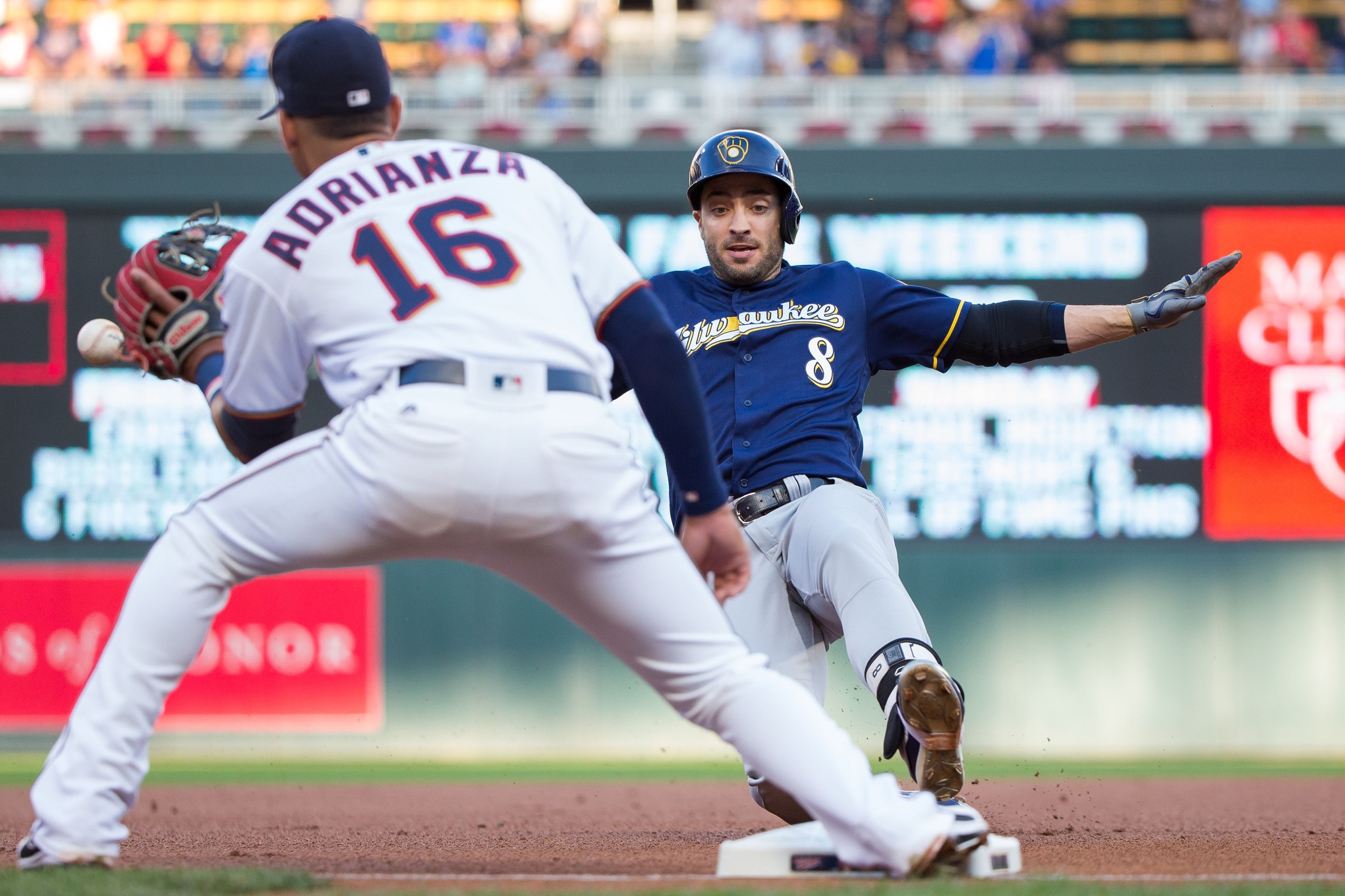If I handed the current NL Central standings to you on Opening Day, what explanation would you give me?
There are a couple of routes you could take, but they would all probably include 2016’s star Brewers; Ryan Braun and Jonathan Villar. The duo placed one and two last year in VORP and BWARP among Brewers players. For sure they’d play a big role in any success the following season, right?
Well, if you have been watching, you’d know this is far from the truth. The two have compiled underwhelming seasons to say the least. Braun has picked up his performance lately, but a recurring left calf injury has refrained him from entering a hitting groove. Villar has completely fallen off any trail he paved for himself last year. His increased expectations have diminished to a level below mediocre.
Through Tuesday, Braun played just 60 games, slashing .281/.355/.535 with 12 home runs, while Villar nursed a .216/.276/.336 slash line with substantial decreases in power and speed numbers. And yet, the Brewers are outperforming expectations. To further the circumstances, Milwaukee’s third, fourth and sixth highest valued players from 2016 (Jonathan Lucroy, Chris Carter, and Aaron Hill) play in different uniforms. What the Brewers have been able to do without the production of 2016’s leading hitters is impressive.
What if Braun and Villar contributed like the 2016 Braun and Villar combo? The Brewers would look a whole lot different.
First, let’s take a look at Milwaukee’s offensive blueprint this season. A precursor to this chart: the Brewers offense has been tailing off hard, slashing .212/.282/.347 (30th/29th/30th in MLB) in their last 14 games.
| Total | MLB Ranking | |
|---|---|---|
| HR | 163 | T-5th |
| SLG | .434 | 11th |
| ISO | .185 | 8th |
| TAv | .263 | 13th |
| VORP | 222.9 | 9th |
If the season ended at this moment, Milwaukee would have a better-than-average offense by these metrics. If we replaced Braun and Villar’s 2016 production with their 2017 production, the Brewers would have an elite offense. The Brewers would be third in baseball in home runs and see a giant uptick in offensive efficiency stats, such as BWARP and TAv.
Most importantly, Milwaukee’s win total would increase. I looked at Villar’s and Braun’s 2016 and 2017 Win Advancement and Wins Above Replacement Player statistics. For their 2016 seasons, I totaled the statistics and paced them out at an 115-game mark. I left their 2017 season statistics as is.
| Villar | Braun | |
|---|---|---|
| 2017 WPA+ | 5.49 | 5.06 |
| 2016 pace WPA+ * | 9.78 | 7.4 |
| 2017 WARP | 0.1 | 1.7 |
| 2016 pace WARP * | 3.34 | 3.05 |
In replacing the 2017 Braun and Villar combo with their 2016 versions, the Brewers would evidently increase their win total. Adding up the WARP increases, one could argue that the Brewers would have enough wins to lead the NL Central.
Constructing this hypothetical scenario is almost purposeless, but it does raise some interesting what-ifs. When the Brewers were 5.5 games ahead of the Cubs on June 11, what if they were 8.5 games up instead? How does that shake up Milwaukee’s trade deadline plan? Do they pursue Yu Darvish or Sonny Gray harder? It also generates appreciation for the young studs and role players on the Brewers’ offense. Players like Domingo Santana, Orlando Arcia, Jesus Aguilar, and Manny Pina have all excelled in their 2017 spots. Travis Shaw and Eric Thames have burst onto the scene.
In the end, Milwaukee has done an impressive offensive job in 2017. To do it with much less production from its two stars (and five of its six most valuable players) from 2016 is remarkable. Thinking what-if undoubtedly generates frustration, but also grows appreciation for the strong core the Brewers have for the future.
Photo Credit: Brad Rempel, USAToday Sports Images
